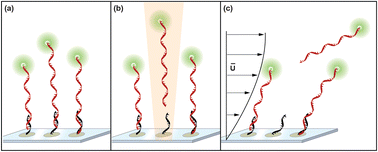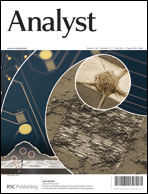On-chip laser-induced DNA dehybridization†
Abstract
Detection of pathogens and relevant genetic markers using their nucleic acid signatures is extremely common due to the inherent specificity genomic sequences provide. One approach for assaying a sample simultaneously for many different targets is the DNA microarray, which consists of several million short nucleic acid sequences (probes) bound to an inexpensive transparent substrate. Typically, complex samples hybridize to the microarray and the pattern of fluorescing probes on the microarray's surface identifies the detected targets. In the case of evolving or newly emergent organisms, a hybridization pattern can occur that differs from any previously known sources. When this happens it can be useful to recover the hybridized DNA from the binding locations of interest for sequencing. Here we present the novel utilization of a focused Infrared (


 Please wait while we load your content...
Please wait while we load your content...